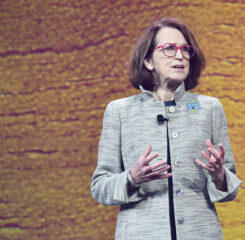Better Care Better Jobs Act: Innovative Models that Address the HCBS Workforce
On September 14, the Energy and Commerce Committee advanced health care proposals to be included in the $3.5 trillion budget reconciliation package. The Committee’s bill allocates $190 billion to expand Medicaid home and community-based services (HCBS) for older adults and people with disabilities, as specified in the Better Care Better Jobs Act. While this would be a historic investment in Medicaid HCBS and opportunities to strengthen the HCBS workforce, LeadingAge continues to advocate for a number closer to the $400 Billion the President asked for in the American Jobs Plan. LeadingAge is pleased to see the continued survival of the proposal to infuse billions of dollars into HCBS programs, aiming much of it at improving wages for workers.
The package does not yet include LeadingAge’s request for $55 billion to increase Medicaid reimbursement for nursing homes to pay wages sufficient for the recruitment and retention of staff, especially front line workers.
Better Care Better Jobs Act: Innovative Models that Address the HCBS Workforce
Under the Better Care Better Jobs Act, states would be required to develop “HCBS Infrastructure Improvement Planning Grants.” As part of these plans, states would be required to report on the existing HCBS landscape and describe how they will address gaps and disparities in access and utilization. States would receive a 10-percentage point increase in the Medicaid Federal Medical Assistance Percentage (FMAP) for HCBS and an enhanced federal match of 80% for administrative activities associated with improving HCBS programs. To receive this enhanced match, states would be required to strengthen and expand the HCBS workforce. Such initiatives would:
- Address insufficient payment rates for HCBS to promote access and improve workforce recruitment and retention;
- Update HCBS payment rates every two years through a transparent process with input from stakeholders;
- Ensure increases in HCBS rates are passed through to workers to improve compensation for direct care workers;
- Ensure rates are incorporated into managed care arrangements; and
- Update, develop, and adopt qualification standards and training opportunities for direct care workers and family caregivers.
States may receive an additional 2 percentage point FMAP increase for HCBS for one year if they establish certain models for the delivery of self-directed care. The programs could be established directly or by contracting with non-profit entities. Such programs would:
- Register qualified direct care workers and connect beneficiaries with providers;
- Where applicable, support beneficiaries who wish to hire a caregiver who is a family member or a person with whom they have an existing relationship to provide care; and
- Ensure that program policies and procedures allow for cooperation with labor organizations where applicable in states and that programs remain neutral with regard to organizing.
To receive enhanced federal Medicaid funding for HCBS, states must meet certain accountability and quality requirements. Specifically, after seven years of receiving enhanced funding, demonstrate: increased availability of HCBS, reduced disparities in the utilization and availability of HCBS, evidence that a majority of direct care workers receive competitive wages and benefits, and at least 50% of long-term care spending on HCBS.
The Secretary of Health and Human Services (HHS) will be required to work with the Administrator of the Centers for Medicare & Medicaid Services (CMS) and the Secretary of Labor to issue a report that provides recommendations to strengthen the HCBS workforce. The recommendations should include how CMS and state Medicaid programs can enforce and support the provision of competitive wages and benefits.
LeadingAge members and other aging services stakeholders are urged to respond to action alerts to secure the full $400 billion in HCBS funding as well as inclusion of $55 billion to increase Medicaid reimbursement for nursing homes to pay wages sufficient for the recruitment and retention of staff, especially front line workers.

Most Recommended
November 08, 2024
 HOTMA: New Rules for Housing
HOTMA: New Rules for Housing
November 06, 2024
 Colleagues on the Move, November 6, 2024
Colleagues on the Move, November 6, 2024
November 06, 2024
 Analysis: What Does the Final CY2025 Home Health Rule Include?
Analysis: What Does the Final CY2025 Home Health Rule Include?
October 29, 2024
Katie Smith Sloan Urges Members to Build a Movement, Take Action
Recently Added
December 10, 2024
4 Top Tech Themes from 2024
December 09, 2024
 Analysis: What’s Changing with the Home Health CAHPS Survey?
Analysis: What’s Changing with the Home Health CAHPS Survey?
December 09, 2024



